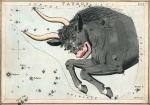Crux Commissa
This page outlines a little bit about a cross which was quite possibly of the style used to crucify Jesus, and therefore revered by many Christians who refer to it as a Tau Cross or St. Anthony's Cross.
Its heraldic name is Crux Commissa.
On his page we look at non-Christian interpretations, of which there are several.
Heraldry
Heraldry is full of profound meaning, once we delve into it. Transliteration of Crux Commissa is 'commissioned cross'; that is, a cross that has been assigned a mission by a higher authority.
The horizontal bar at the top of the post, and the name, is rather like the auctoritate mihi commissâ ("with the authority entrusted to me" symbolised by the square academic cap or 'mortarboard'), which originated from the priest's biretta, and adopted as an Oxford University graduate's academic headdress.
Clergy may well feel that undermines the status of the biretta. More recently, other critics may feel this has been further eroded by some US high schools, weakening its status to little more than fancy dress.
Nonetheless, the word Commissa retains its connection with a position of high (judicial) authority.
Mythology
In Norse mythology, the letter T is associated with Thor, the hammer-wielding god, symbolizing strength, protection, and divine authority. (See also the Hammer Cross.)
With the cross bar used as a carrying handle, it is called Crux Ansata and represents a symbol of divinity on Egyptian and Assyro-Babylonian sculptures, such as Isis and Osiris. (See also the Ankh Cross.)
In Taoism, the letter T is part of the term "Tao" (or Dao), which means "the way" or "the path" in Chinese philosophy. The symbol represents the fundamental nature of the universe, its flow, and balance.
In alchemy, the letter T can sometimes symbolize the idea of transformation or transition, representing the crossing of boundaries or a shift from one state to another.
Conveniently, the original form of the letter 'T' was the initial letter of the god of Tammuz. During baptism ceremonies, this cross was marked on the foreheads by the Pagan priest.
Astrology
"Tau" appears in the name "Taurus", the Greek word for the male bovine - "bull". The shape of the astrological sign for the bull is a phallic symbol.
With a bit of imagination, you can see a bull's horns and snout in the 'T' shape; hence the astrological sign ♉ for 'Taurus the bull'.
In the Christian context, the mission is the Crucifixion, and the higher authority is God.


